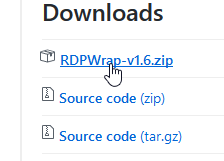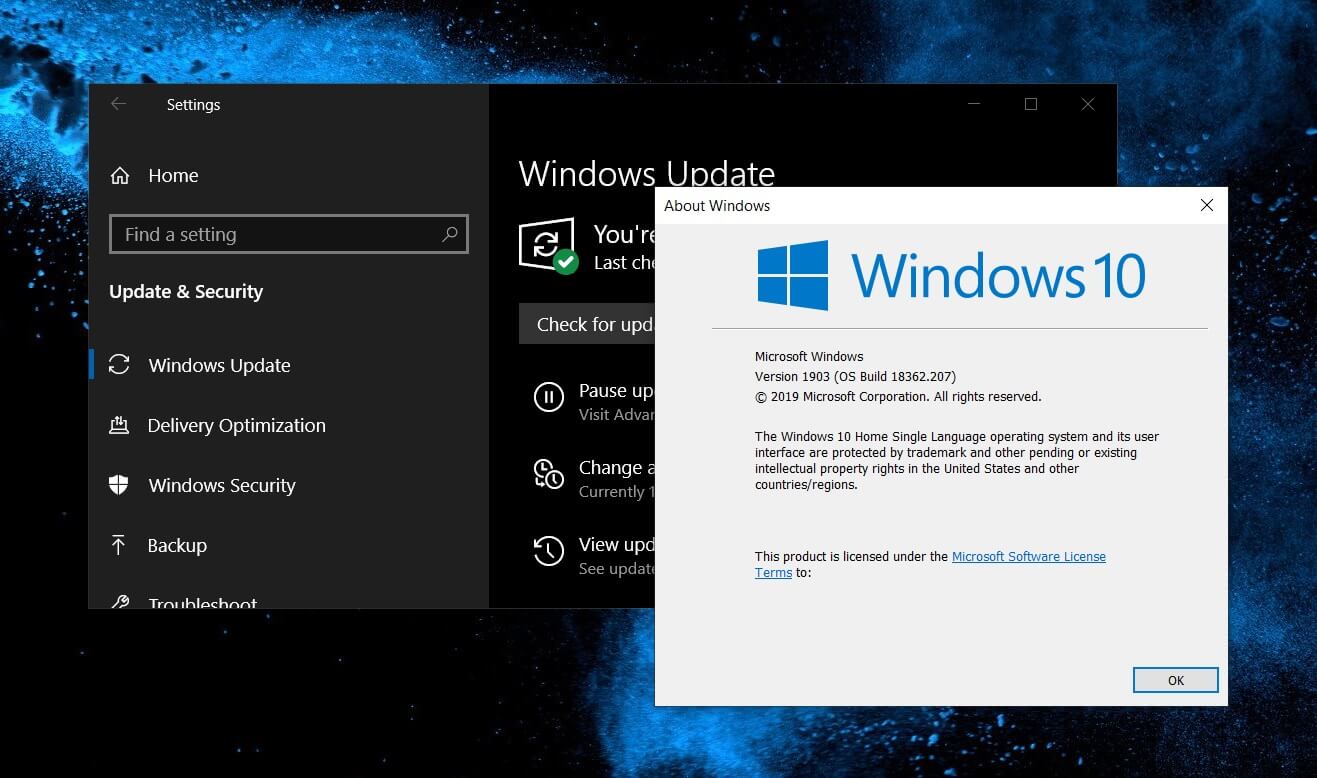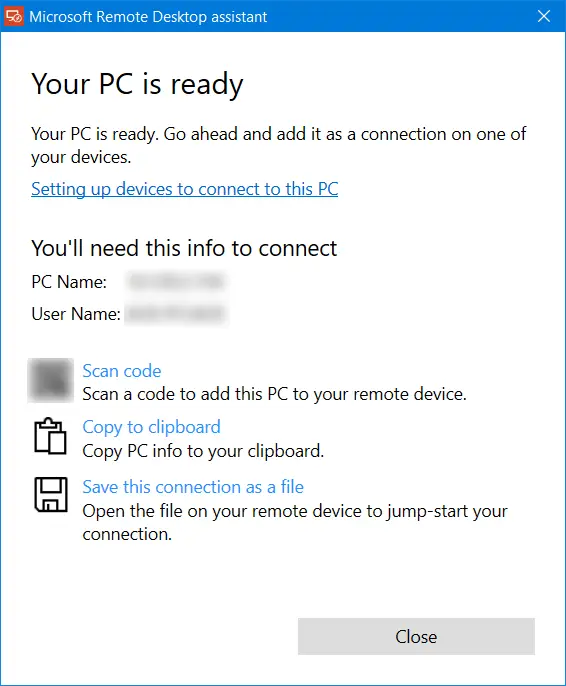The host or debuggee machine is the Windows 10 device that you want to debug. It may be a remote device that is hard for you to physically access or it may not have keyboard and mouse peripherals, making it difficult to interact with the Microsoft Edge DevTools on that device.
- Microsoft Remote Desktop Windows 10 Mac
- Remote Control For Windows 10
- Microsoft Remote Desktop Connection Windows 10
- Applies to: Windows 10, Windows 8.1, Windows Server 2019, Windows Server 2016, Windows Server 2012 R2 You can control a remote PC by using a Microsoft Remote Desktop client. The client can run on almost any device, including on your mobile smartphone. The client gives you the same powers you would have if you could reach the PC's keyboard.
- I am using windows 10 pro and attempting to remote connect to a windows 7 pro machine. I select the 'Use all my monitors for the remote session' option, but when I connect the remote session is only displayed on monitor 1.
Applies to: Windows 10, Windows 8.1, Windows Server 2019, Windows Server 2016, Windows Server 2012 R2


Applies to: Windows 10, Windows 8.1, Windows Server 2019, Windows Server 2016, Windows Server 2012 R2. You can control a remote PC by using a Microsoft Remote Desktop client. The client can run on almost any device, including on your mobile smartphone. The client gives you the same powers you would have if you could reach the PC's keyboard. What Is Remote Desktop on Windows 10? Remote Desktop was included by Microsoft with the release of Windows XP in 2001 and, since then, every version of Windows has included Microsoft's Remote Desktop. When you activate this program, you'll see and interact with your actual Windows computer remotely.
You can control a remote PC by using a Microsoft Remote Desktop client. The client can run on almost any device, including on your mobile smartphone. The client gives you the same powers you would have if you could reach the PC's keyboard. Through the client, you can:
- Operate the apps that are installed on the PC.
- Access the files and network resources of the PC.
- Leave the apps open when you end the client.
Before you start, see the supported configuration article. The article discusses the PC configurations that the Remote Desktop clients can connect to. Also see the client FAQ article.
The following client apps are available:
| Client | Get the app | Documentation | Latest version |
|---|---|---|---|
| Windows Desktop | Windows Desktop client | Get started, What's new | 1.2.1844 |
| Microsoft Store | Windows 10 client in the Microsoft Store | Get started, What's new | 1.2.1810 |
| Android | Android client in Google Play | Get started, What's new | 10.0.10 |
| iOS | iOS client in the App Store | Get started, What's new | 10.2.5 |
| macOS | macOS client in the App Store | Get started, What's new | 10.6.1 |
Configuring the remote PC
To configure your remote PC before accessing it remotely, see Allow access to your PC.
Remote Desktop client URI scheme
You can integrate features of Remote Desktop clients across platforms by enabling a Uniform Resource Identifier (URI) scheme. Learn about the supported URI attributes that you can use with the iOS, Mac, and Android clients.
-->Using containers for remote development and deploying applications with the Docker platform is a very popular solution with many benefits. Learn more about the variety of support offered by Microsoft tools and services, including Windows Subsystem for Linux (WSL), Visual Studio, Visual Studio Code, .NET, and a broad variety of Azure services.
Docker on Windows 10
Install Docker Desktop for Windows
Find installation steps, system requirements, what's included in the installer, how to uninstall, differences between stable and edge versions, and how to switch between Windows and Linux containers.

Get started with Docker
Docker orientation and setup docs with step-by-step instructions on how to get started, including a video walk-through.
MS Learn course: Introduction to Docker containers
Microsoft Learn offers a free intro course on Docker containers, in addition to a variety of courses on get started with Docker and connecting with Azure services.
Get started with Docker remote containers on WSL 2
Learn how to set up Docker Desktop for Windows to use with a Linux command line (Ubuntu, Debian, SUSE, etc) using WSL 2 (Windows Subsystem for Linux, version 2).
VS Code and Docker
Create a Docker container with VS Code
Set up a full-featured dev environment inside of a container with the Remote - Containers extension and find tutorials to set up a NodeJS container, a Python container, or a ASP.NET Core container.
Attach VS Code to a Docker container
Learn how to attach Visual Studio Code to a Docker container that is already running or to a container in a Kubernetes cluster.

Advanced Container Configuration
Learn about advanced setup scenarios for using Docker containers with Visual Studio Code or read this article on how to Inspect Containers for debugging with VS Code.
Using Remote Containers in WSL 2
Read about using Docker containers with WSL 2 (Windows Subsystem for Linux, version 2) and how to set everything up with VS Code. You can also read about how it works.
Visual Studio and Docker
Docker support in Visual Studio
Learn about the Docker support available for ASP.NET projects, ASP.NET Core projects, and .NET Core and .NET Framework console projects in Visual Studio, in addition to support for container orchestration.
Quickstart: Docker in Visual Studio
Learn how to build, debug, and run containerized .NET, ASP.NET, and ASP.NET Core apps and publish them to Azure Container Registry (ACR), Docker Hub, Azure App Service, or your own container registry with Visual Studio.
Microsoft Remote Desktop Windows 10 Mac
Tutorial: Create a multi-container app with Docker Compose
Learn how to manage more than one container and communicate between them when using Container Tools in Visual Studio. You can also find links to tutorials like how to Use Docker with a React Single-page App.
Container Tools in Visual Studio
Find topics covering how to run build tools in a container, debugging Docker apps, troubleshoot development tools, deploy Docker containers, and bridge Kubernetes with Visual Studio.
.NET Core and Docker
.NET Guide: Microservice apps and containers
Intro guide to microservices-based apps managed with containers.
What is Docker?
Basic explanation of Docker containers, including Comparing Docker containers with Virtual machines and a basic taxonomy of Docker terms and concepts explaining the difference between containers, images, and registries.
Tutorial: Containerize a .NET Core app
Learn how to containerize a .NET Core application with Docker, including creation of a Dockerfile, essential commands, and cleaning up resources.
Development workflow for Docker apps
Describes the inner-loop development workflow for Docker container-based applications.
Azure Container Services
Azure Container Instances
Learn how to run Docker containers on-demand in a managed, serverless Azure environment, includes ways to deploy with Docker CLI, ARM, Azure Portal, create multi-container groups, share data between containers, connect to a virtual network, and more.
Azure Container Registry
Learn how to build, store, and manage container images and artifacts in a private registry for all types of container deployments. Create Azure container registries for your existing container development and deployment pipelines, set up automation tasks, and learn how to manage your registries, including geo-replication and best practices.
Remote Control For Windows 10
Azure Service Fabric
Learn about Azure Service Fabric, a distributed systems platform for packaging, deploying, and managing scalable and reliable microservices and containers.
Microsoft Remote Desktop Connection Windows 10

Azure App Service
Learn how to build and host web apps, mobile back ends, and RESTful APIs in the programming language of your choice without managing infrastructure. Try the Azure App Service course on MS Learn to deploy a web app based on a Docker image and configure continuous deployment. Free snap on scanner updates.
Learn about more Azure services that support containers.
Docker Containers Explainer Video
Kubernetes and Container Orchestration Explainer Video
Containers on Windows
Containers on Windows docs
Package apps with their dependencies and leverage operating system-level virtualization for fast, fully isolated environments on a single system. Learn about Windows containers, including quick starts, deployment guides, and samples.
FAQs about Windows containers
Find frequently asked questions about containers. Also see this explanation in StackOverflow on 'What's the difference between Docker for Windows and Docker on Windows?'
Set up your environment
Learn how to set up Windows 10 or Windows Server to create, run, and deploy containers, including prerequisites, installing Docker, and working with Windows Container Base Images. Antares auto key crack.
Create a Windows Server container on an Azure Kubernetes Service (AKS)
Learn how to deploy an ASP.NET sample app in a Windows Server container to an AKS cluster using the Azure CLI.
